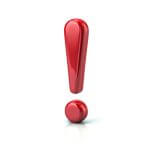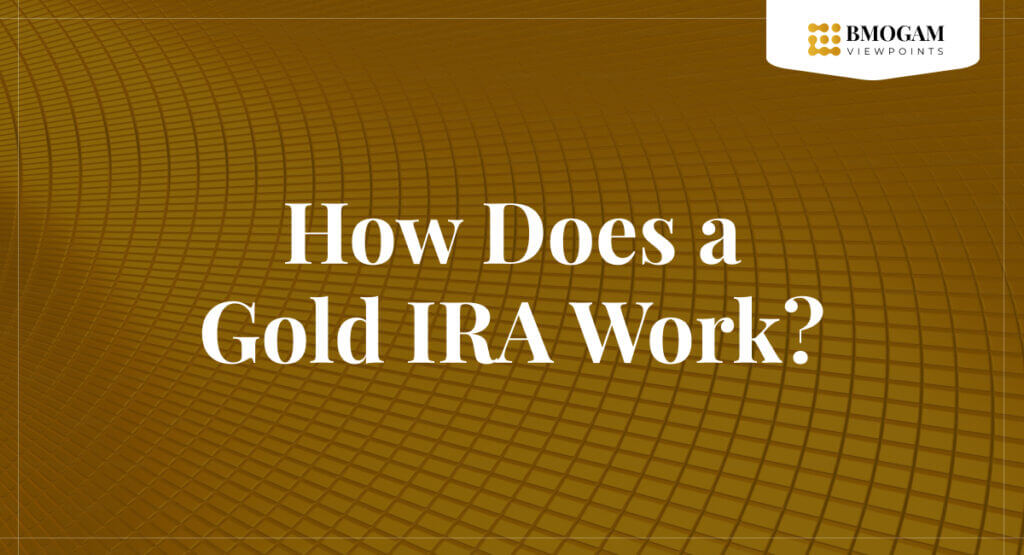Disclaimer: We are reader supported. We may be compensated from the links in this post, if you use products or services based on our expert recommendations. Please read our Advertising Disclosure.
What is a gold individual retirement account? This is a question that you need to know the answer to if you want to plan for retirement.
Even if you decide against using a gold IRA, you need to be aware of what it entails so you can make informed decisions about investing for your retirement years.
A gold IRA is a form of self-directed individual retirement account that focuses on investing in physical precious metals.
Gold is the most famous precious metal you can invest in. However, you might also be able to invest in silver, palladium, and platinum.
Before we get started:
We understand how difficult it is to pick a company that you can trust with your hard earned savings. That's why we create informative and useful information to give you as much knowledge as possible to make the right decision.

We created a list of our highest recommended investment companies, to make comparing and choosing the company best suited to your needs as easy as possible.
>> CLICK HERE to read our list of the Best Gold IRA Companies. <<
Or...
Get a FREE Gold Investing Kit from our #1 recommendation, by clicking the button below:
If you want to invest in your own gold IRA, then you'll need certain things as part of the deal. First of all, you'll need someone to serve as the account custodian.
You'll also need a broker who can buy the gold for you and an IRS-approved depository where the gold will be stored for the duration of the account.
As with other forms of self-directed IRAs, you can go one of two routes with your gold individual retirement account. The first is a traditional IRA. Your other choice is setting up a Roth IRA.
What's the Idea Behind a Gold IRA?
Nearly any investor is going to have the same two goals as every other investor out there. The top priority is maximizing investment returns.
That's followed closely by the second goal of minimizing the involved risks, as any kind of investing is going to carry some kind of risk with it.
Many investors are accepting the fact that they can accomplish both of these goals at the same time by investing outside the traditional asset classes. Traditional retirement investing normally involves stocks, CDs, bonds, ETFs, and mutual funds.
These are core elements of many retirement accounts and should likely still be heavily represented in your retirement portfolio. Alternative assets allow for diversification and asset protection.
Common alternative asset classes include cryptocurrencies and real estate. Physical assets, such as precious metals, also count.
Investors have the power to harness alternative assets through the vehicle of self-directed individual retirement accounts. These are also just known as SDIRAs.
Whether a traditional or Roth SDIRA, they have the same rules and regulations about income limits, contributions, and distributions as you might already be aware of regarding mainstream IRAs.
Gold is very popular right now because of its historical tendency to protect asset value versus inflation.
While current levels of inflation might be starting to taper off just a bit, inflation has been high for several years and might continue to be a portfolio threat in the coming years. This is likely to make gold IRAs even more popular soon than they are already.
What Can You Invest in With a Gold IRA?
A gold IRA is technically a kind of SDIRA. It lets you invest for retirement using physical gold. Other precious metals, such as silver, platinum, and palladium may also be held in this account.
You should note that the gold IRA option is only required if you want to invest in actual physical gold. This would be things such as bullion, coins, and bars.
Distinguishing this is important because investing in the gold or precious metal industry is possible without buying actual tangible, physical products.
For instance, traditional IRAs can invest in gold company stocks. You might also invest in mutual funds that invest in the precious metal industry. There are even ETFs that follow a gold index performance.
Your gold IRA can have different precious metals in it. The IRS allows for silver, palladium, and platinum. The specific products you invest in have to be physical, just like gold.
The IRS states that gold SDIRA investors can invest in gold coins minted in amounts of 1, 0.5, 0.25, and 0.1 ounces. Silver coins of 1 ounce are also permitted. Treasury Department coins are preferred.
Not every custodian or broker will offer metals other than gold, but some do. Platinum coins of certain designations are possible within the IRS rules. Bullion of all four metals can also be invested in, so long as the requirements are met.
5 Steps for Your Gold IRA
A gold IRA isn't so much of a thing as it is a process that hopefully helps you prepare for retirement.
It starts earlier in life, but it also comes to a close when you get to your retirement years.

Knowing the five steps of the process helps you understand how the life cycle of a gold IRA can serve your investment goals and needs.
1. Choose a Reputable Custodian to Work With
You might already be familiar with brokers and custodians of mainstream IRAs. They prove useful when you invest in traditional asset classes. However, they might not have the capacity to open an SDIRA, much less operate it.
That means you'd need a broker capable of operating your gold IRA. You'll have to look for a trustee or custodian that can do that for you, and there are certainly options out there, even if there aren't as many as there are for mainstream IRAs.
A quick search might show you some of the most popular and reputable names in the industry, such as our #1 recommendation Goldco, followed by Augusta Precious Metals, American Hartford Gold, and Birch Gold Group.
Any of these brokers are effective options for your gold IRA. Which one you choose should be based on pertinent factors. Those might include their customer service levels, accountability, transparency, overall track record, and the fees that they charge.
You can get to know each broker through online research. Another smart move is contacting them directly, as many of them offer free consultations and even information kits before you sign up.
Contacting them directly might be necessary if you want to find out their current prices and any specials that they might be running.
2. Fund Your Gold IRA
Any investment is going to require funds to get started, and your gold IRA is something you can fund in two different ways. The first is by making annual contributions, and the second is by doing a rollover.
Congressional legislation and the IRS both place maximum caps on how much you can contribute in any given year. If you are under the age of 50, then you can only contribute $6,000 per year.
If you're at age 50 or later, then you can contribute $7,000 each year to help you prepare for retirement.
Doing a rollover means you bring in funds from a previous retirement account that was tax-sheltered. These include mainstream IRAs, but you can also do a rollover from a 401k plan.
These rollovers follow largely the same rules that you would follow doing rollovers in mainstream accounts. For instance, if you roll pre-tax funds into your traditional IRA, then they don't get taxed until you make a withdrawal.
Also, if you roll pre-tax funds into your Roth IRA, then they get taxed before the conversion. Post-tax funds don't get taxed when going into a Roth, whether it's mainstream or a precious metal IRA.
3. Purchase IRA-Eligible Precious Metal Products
The IRS has very specific rules about which precious metal products are allowed in a gold SDIRA and which ones aren't. Gold bars need a minimum of 99.5% purity, and it's 99.9% for silver. Palladium and platinum are held to an even higher standard of 99.9%.
Proof coins have to be in great condition. The packaging they are in has to be complete and original. A certificate of authenticity is also a mandatory requirement.
Small bullion bars need to weigh exactly right. Bullion coins have to be free of blemishes and uncirculated. Collectibles are not permissible.
All precious metal products have to be made or manufactured by an approved mint, assayer, or refiner. These organizations must align with a long list of standards and industry qualifications.
The IRS has extensive lists of rules regarding this, but your custodian should also know which products are permitted and which ones aren't.
Your trustee or custodian will oversee the accounting. However, SEC rulings dictate that they aren't liable for which broker or gold seller you use. They can offer suggestions, but the accountability for your choices is ultimately yours as the investor.
4. Choose an Eligible Depository
If you buy precious metals on your own, you can store them pretty much anywhere you want. You can keep them at home, or you could put them in a safety deposit box. You would also be paying sales tax on them with post-tax income.
Precious metals in a gold IRA have serious tax benefits, and the IRS doesn't want anything happening to those precious metals. That's why depository storage is a mandatory requirement. These vaults do carry annual fees in most cases.
You'll probably have to choose a depository inside the United States. You might also need to decide on segregated storage versus having your metals sitting in the same room as those of other investors, although things are kept highly organized.
Make sure whoever you choose has insurance, and you might want to pick someone that allows visits or sets up a live webcam so you can at least see your metals online when you want.
If you try and store your gold at home, you might be able to take personal possession of it, but the IRS would consider that to be a withdrawal. If you have a traditional gold IRA, then you're going to get hit with taxes.
Also, if the withdrawal happens before you turn 59 1/2, then you're going to also face penalties on top of the taxes, which usually amount to 10% of the value you take out.
Fortunately, you'll find some names you know among many depository options. Specific examples include HSBC, Brinks, and HSBC.
Many brokers have good relationships with specific depositories that they can recommend to you, such as Delaware Depository Service Company.
5. Taking Distributions
There will come a time to take distributions from your gold IRA. The rules in place for that vary on the kind of IRA you do. Things are different for a traditional SDIRA than for a Roth.
In a traditional gold SDIRA, you can start making withdrawals at the age of 59 1/2. By age 72, you have to start taking required minimum distributions known as RMDs.
Each withdrawal gets taxed whether you do it voluntarily or because you are required to, and there is an additional 10% penalty for anything you do before age 59 1/2.
If you have a Roth gold SDIRA, then you have no required minimum distributions. Also, your withdrawals won't be taxed. There will be a 10% penalty for any withdrawals before age 59 1/2 and if your gold Roth has been around for at least five years.
When you make a withdrawal, the depository will pull out the precious metals equal in value to your distribution. They can ship them to you for you to take personal possession of or sell on your own.
Many brokers offer buyback options that let you sell directly back to them and get the cash directly instead of personally dealing with the physical metals yourself.
Is a Gold Individual Retirement Account Right for Your Retirement Plans?
Whether or not you choose a gold SDIRA is up to you. The benefits can be potent, but the volatility of precious metal prices might be outside your comfort zone. You need to know both the pros and cons going into this.
The first upside is how gold can be a great hedge against inflation. Most precious metals are also great storage mediums of value when paper assets, from currency to stocks and bonds, can plummet overnight.
Diversification and tax benefits round out the primary advantages of a gold SDIRA. On the other hand, there can be fees to open a precious metal SDIRA.
These fees continue every year, too, since gold takes more physical room and security than mainstream paper assets do.
You also have to take RMDs in many cases by age 72, and selling precious metals isn't always easy, unless you work with one of our Top Recommend Gold IRA Companies which make buy-backs a simple and secure process.
Protect Your Wealth & Tax and Penalty Free!
You can get a Free Gold Investors Guide from our top gold and precious metals company recommendation by clicking the link above or you can read our article of the top companies we reviewed this year:
>> CLICK HERE to read our list of the Top Gold IRA Companies. <<

I started BMOGAM Viewpoints as a way to compile all my views on investing in one place. I own my home, have some real estate, and own a few stocks like most people, but what really drives my interest in investing is I have a strong love of precious metals, especially gold.




